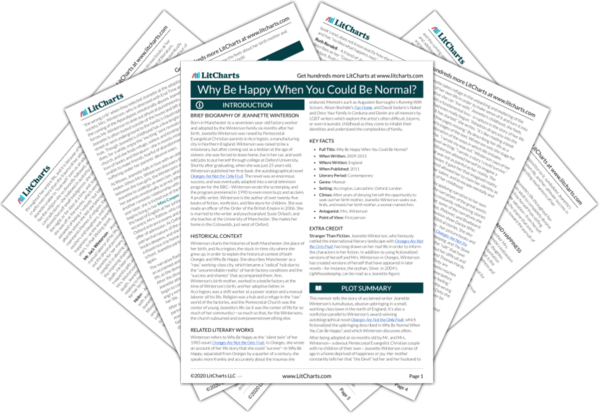extracts a promise from the court manager to meet with the judge in session, find out what he is allowed to tell the two of them, and meet up again in forty-five minutes. and Susie head to a café that used to be the Palatine—’s favorite. Jeanette has not been here since ’s funeral some years ago. Jeanette interrupts the narrative to reminisce about her father’s funeral—after her check payment for his burial wasn’t received, she had to convince the cemetery that she was not going to stiff them—she produced a copy of her novel
Oranges Are Not the Only Fruit from her purse (she had intended to bury her father with it but changed her mind),
the men were impressed, and they allowed Jeanette to write a new check on the spot. Mr. Winterson was buried with his second wife , far away from the plot that held Mrs. Winterson’s body.


